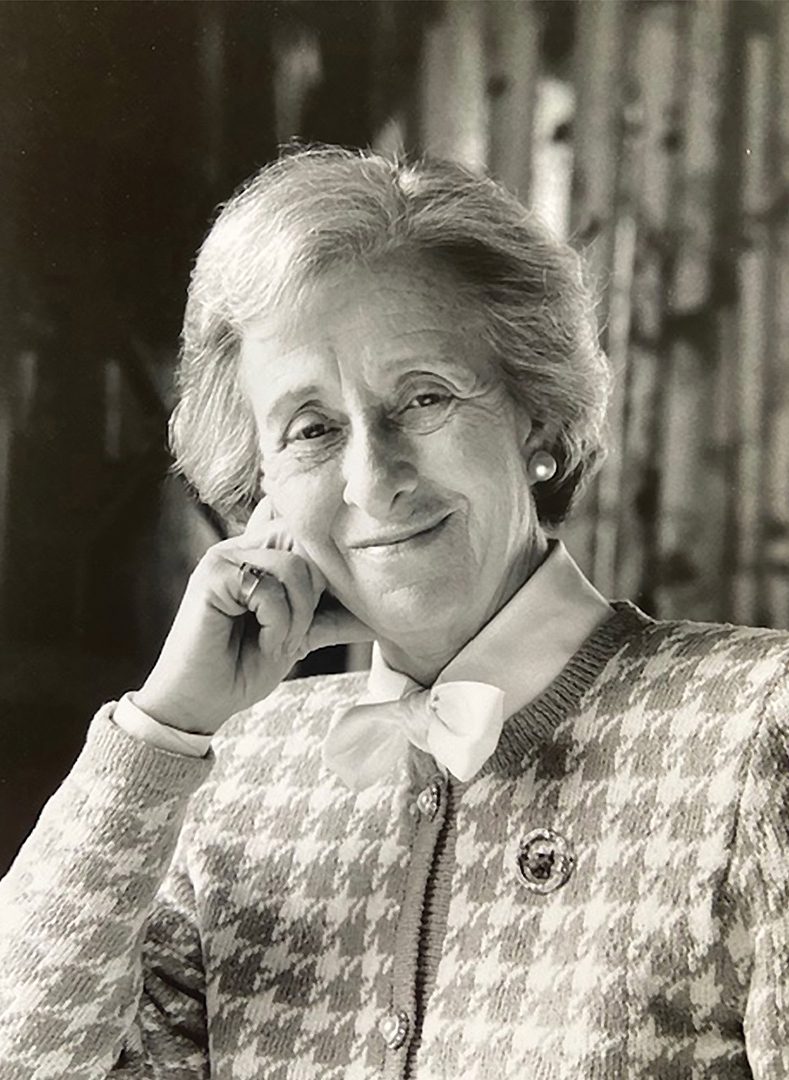
Mary Frances Wagley ’47, a lifelong educator who became the first woman to serve on the MIT Corporation and as president of the MIT Alumni Association, died November 1 at the age of 93.
Born in New York City to Caroline and James Cash Penney, the founder of J.C. Penney, Wagley grew up on a small farm in White Plains and was one of the first in her family to attend college. When she applied to MIT—the only school she applied to—a dean told her he was sure she wouldn’t like it, Wagley said in an interview for the MIT Infinite History project in 2009.
“Well, I proved him wrong,” she said. “I was happy from the moment I stepped foot in the Institute … I was just ready to soak up all I could learn, and from the day I walked in those doors at 77 Mass. Avenue, it just seemed to me this is the place I belong.”
One of just a dozen women in her class, Wagley lived off campus with a friend, Emily “Paddy” Wade ’45, because there were no dormitories for women. She had to change her major from chemical engineering to chemistry because she was not allowed to participate in the required chemical engineering summer camp. Yet she flourished, says her son, Jay Wagley, SM ’89.
“My mom was a force. I think it was hard to be one of only 12 in her class, but she never shied away from a challenge,” he says. “She had a spectacular mind and enormous intellectual curiosity.”
MIT also impressed on Wagley the social value of science and engineering. The Institute’s response on VE Day, May 8, 1945, always stuck with her. “President Compton celebrated the Allied victory with us students, but then he told us to go back to class, because our skills were needed in the war effort and for postwar reconstruction,” she told MIT News in 2008. “I guess this was the first time I felt important.”
Wagley earned a doctoral degree in physical chemistry from Oxford University and accepted a job at Smith College, where she discovered that she loved finding ways to make concepts clear to students. While raising three children with her husband, physician Philip Franklin Wagley, she went on to teach at Johns Hopkins University and Goucher College, and in 1966 she became head of St. Paul’s School for Girls in Maryland, which developed a reputation for strong math and science preparation under her leadership.
As a member of the MIT Corporation, which she joined in 1970, Wagley focused on athletics, which had been completely unavailable to her as a female student. She was instrumental in getting the Zesiger Sports and Fitness Center built, and she established the Mary Frances Wagley Fund to support the head coach position for varsity men’s and women’s swimming and diving. She also served on multiple visiting committees as well as on the search committees that selected MIT presidents Paul Gray and Charles Vest.
Wagley was working as the executive director of Episcopal Social Ministries of the Diocese of Maryland, where she ran a food bank and a homeless shelter, when she became the president of the MIT Alumni Association in 1984. She became a life member of the MIT Corporation in 1988 and a life member emerita in 2002.
“Mary Frances Wagley was a force for a better world and a pioneer for women in science and technology,” says MIT Corporation chair Diane Greene, who is the first woman to lead the Corporation. “Everyone at MIT is fortunate to be benefiting from her pathbreaking footsteps.”
A virtual memorial service was being planned at press time. For details, click here.
Keep Reading
Most Popular
Large language models can do jaw-dropping things. But nobody knows exactly why.
And that's a problem. Figuring it out is one of the biggest scientific puzzles of our time and a crucial step towards controlling more powerful future models.
The problem with plug-in hybrids? Their drivers.
Plug-in hybrids are often sold as a transition to EVs, but new data from Europe shows we’re still underestimating the emissions they produce.
Google DeepMind’s new generative model makes Super Mario–like games from scratch
Genie learns how to control games by watching hours and hours of video. It could help train next-gen robots too.
How scientists traced a mysterious covid case back to six toilets
When wastewater surveillance turns into a hunt for a single infected individual, the ethics get tricky.
Stay connected
Get the latest updates from
MIT Technology Review
Discover special offers, top stories, upcoming events, and more.